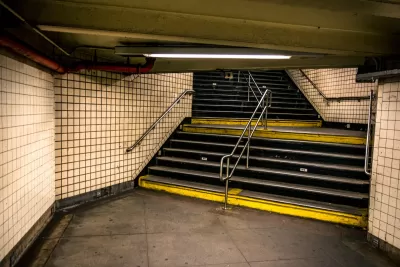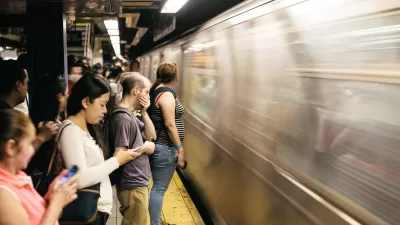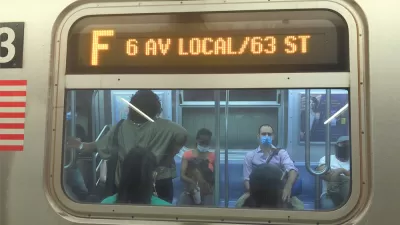For many people with mobility challenges, just getting to an accessible subway station in New York is an impossibility.

Jugal K. Patel discusses findings of a New York Times analysis of subway accessibility. Over half a million people in New York City have issues walking, and two-thirds of them live more than a 10-minute walk from an accessible subway station. In addition, elevators are located in only about a quarter of the city’s subway stations.
"Most people with disabilities have to rely on an inefficient bus system or the Access-A-Ride program, a paratransit service run by the city and the Metropolitan Transportation Authority that critics say is unreliable," notes Patel.
The analysis also considers the challenges of navigating the subway with young children, after a mother with her child died last month when she fell down the stairs at a station. Spatial analysis of where children are located in the city shows that large numbers are in neighborhoods far from stations with elevators.
The MTA has plans to put in 50 new elevators in the next five years, and the agency also now has an accessibility chief position. But, disability rights advocates say it is not enough and too much of the subway system still remains off limits to most people who have difficulty walking.
FULL STORY: Where the Subway Limits New Yorkers With Disabilities

Maui's Vacation Rental Debate Turns Ugly
Verbal attacks, misinformation campaigns and fistfights plague a high-stakes debate to convert thousands of vacation rentals into long-term housing.

Planetizen Federal Action Tracker
A weekly monitor of how Trump’s orders and actions are impacting planners and planning in America.

San Francisco Suspends Traffic Calming Amidst Record Deaths
Citing “a challenging fiscal landscape,” the city will cease the program on the heels of 42 traffic deaths, including 24 pedestrians.

Bend, Oregon Zoning Reforms Prioritize Small-Scale Housing
The city altered its zoning code to allow multi-family housing and eliminated parking mandates citywide.

Amtrak Cutting Jobs, Funding to High-Speed Rail
The agency plans to cut 10 percent of its workforce and has confirmed it will not fund new high-speed rail projects.

LA Denies Basic Services to Unhoused Residents
The city has repeatedly failed to respond to requests for trash pickup at encampment sites, and eliminated a program that provided mobile showers and toilets.
Urban Design for Planners 1: Software Tools
This six-course series explores essential urban design concepts using open source software and equips planners with the tools they need to participate fully in the urban design process.
Planning for Universal Design
Learn the tools for implementing Universal Design in planning regulations.
planning NEXT
Appalachian Highlands Housing Partners
Mpact (founded as Rail~Volution)
City of Camden Redevelopment Agency
City of Astoria
City of Portland
City of Laramie





























